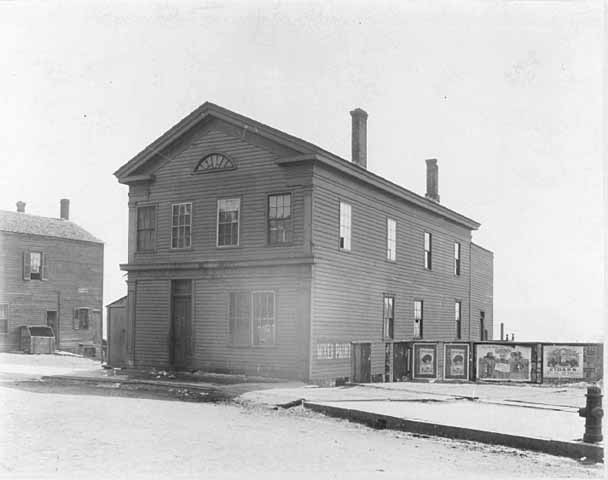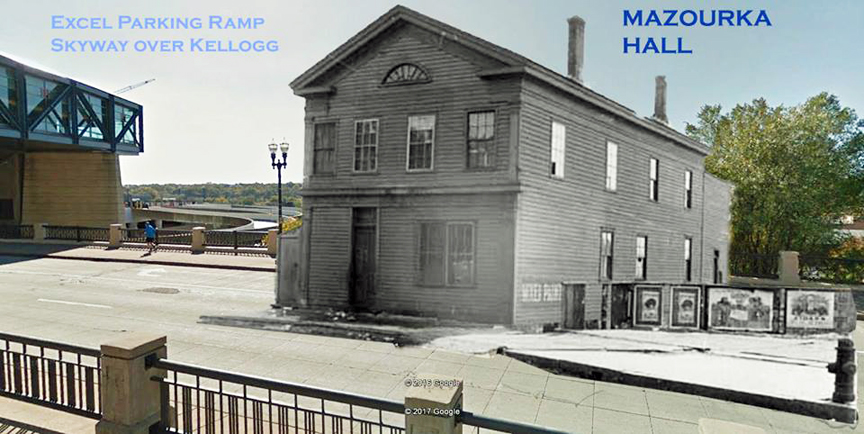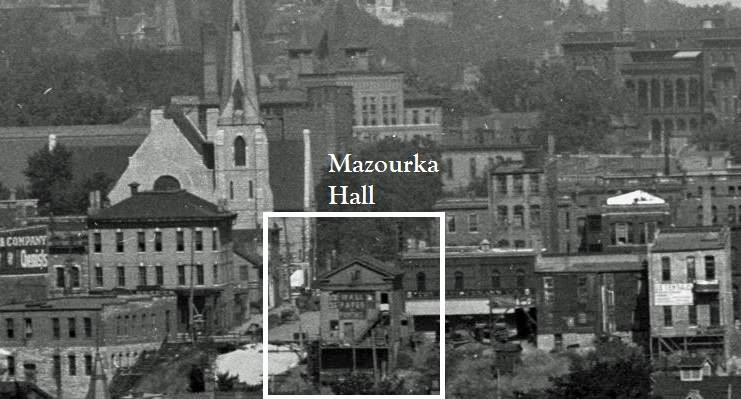Mazourka Hall
The Mazourka/Mazurka Hall was the oldest music venue found in the database of the Minnesota Historical Society, shown in the photo below from 1890.

As it turns out, Russ Hanson has done quite a bit of research on the hall, and provided this summary:
Pretty much forgotten now, the Mazourka was a very important landmark in the earliest days, as it was the first dedicated outlet for fun, hosting nearly all of the early cultural performances and events when St. Paul was just beginning. How ironic and fitting that our later large auditoriums and Civic Centers have all been built within a stone’s throw of this place.
Built in 1850, Mazourka Hall was the scene of social balls, political meetings, dramatic, comedic and musical events and even held district court here in 1851. It was located on the SE corner of 3rd (Kellogg) and Exchange St. (across the street from present day Excel Center’s southeast entrance doors).
I’ve done a time merge here also to try and help show the site at its exact location. The upstairs was the ballroom or hall; the downstairs housed Elfelts Store.

On October 14, 1850, the editor of the Minnesota Chronicle and Register newspaper wrote “Elfelts (Abrams Elfelt) new store is 70’ deep opposite the American house and is almost complete. When complete there will be balls given on the second floor and the name the Chronicle would like to suggest is Mazurka Hall.” Misspelling aside on the suggestion, Elfelt did name the hall “Mazourka Hall” and it became the place to be in the 1850 social season , a time when there were very few places for folks in St. Paul to gather. Soon there would be many halls and hotels built for such occasions but in the early 1850s the Mazourka was the place to be and be seen.
Below is another photo from Russ, showing the location of the Hall in old St. Paul in 1908.

Jim Sazevich describes the building’s history post-music:
The hall was owned and operated by a long list of Jewish businessmen and women, as a grocery store, confectionery, auto battery and tire sales, boarding house, etc, for decades after it ceased serving as a public meeting hall and theater. I believe it was lastly used for a carpenter / cabinet making shop by Carl J. Flater (1885-1959) in 1925, before it was razed that year or the next.
